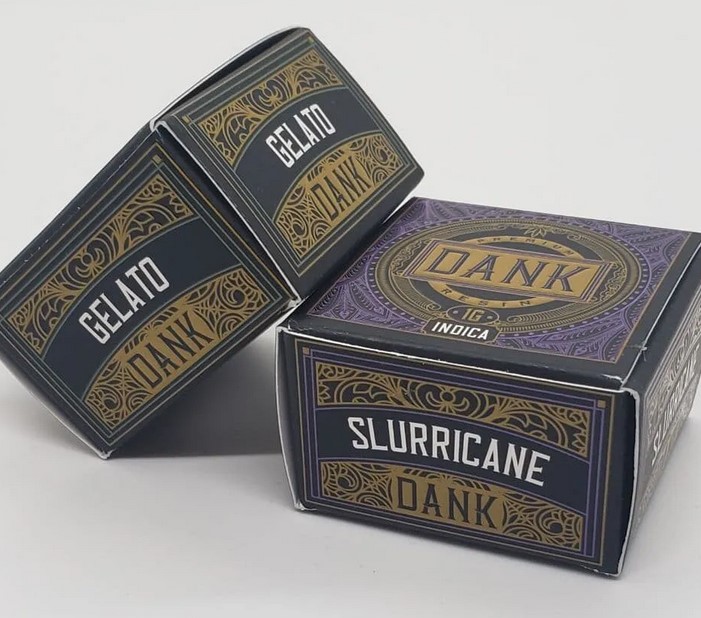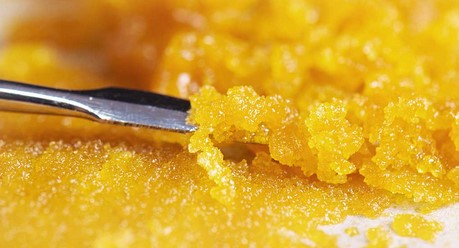Ever wonder what that sticky substance on a cannabis plant is? It is called cannabis resin, and it has a wide variety of uses. It is the crown jewel of the cannabis plant. Most of the intoxicating compound (THC) for which marijuana is desired and used is found in cannabis resin. Byu DANK Premium Live Resin 1g online to relax.

Although many prefer to smoke the bud, resin is still usable, which many people may not realize. It differs in color from golden, to red, to black. This color depends on the strain of cannabis used, method of production, and storage conditions. You can smoke resin by itself, but it’s primarily used to supplement other substances such as regular cannabis, tobacco, or other herbal concoctions.
This guide will give you the ins and outs of cannabis resin: what it is, how to use it, and much more.
What Is Cannabis Resin?
Cannabis resin is a byproduct of the cannabis plant. It is produced in the plant’s glandular trichomes and appears as a sticky, sappy sort of golden nectar. It is often the material that accumulates at the bottom of your bowl. It can get a bit ashy but is pure and clean if hydraulically pressed.
It is sticky, messy, sappy, and luscious, and very similar to tree sap! However, while tree sap is primarily composed of sugars, cannabis resin consists of cannabis trichomes.

Although all sorts of cannabis plant strains produce resin, it is very heavily concentrated on some types more than others. Unpollinated female cannabis plants contain the greatest amounts of cannabis resin. People who are primarily trying to harvest resin will often opt for these plants to grow and harvest.
In nature, sticky, trichome-laced resin repels insects and herbivores, protects against UV damage, and prevents infections.
In nature, resin functions as the cannabis plant’s immune system. The sticky, trichome-laced substance repels insects and herbivores. It also protects against UV damage and infections, ensuring the plant’s survival.
Also, the resin, which contains terpenes, produces a smell that attracts the insects necessary to the plant’s survival by providing pollination to help it procreate.
Cannabis resin is very fragrant and aromatic. It contains a large number of flavonoids and terpenoids. It smells similar to the cannabis plant itself, with rich and earthy overtones.
The color of cannabis resin varies depending on many factors. However, in general, it’s an amber, golden tone, which is how it comes out of the plant when first extracted. It changes color primarily due to a lot of oxygen exposure, temperature changes, or a lack of purity. Some resin may have a greenish tint due to not being properly filtered from the bud.
How Is Cannabis Resin Produced?
As we’ve already mentioned, natural resin is an organic compound secreted by cannabis plants. There are a variety of ways to make it depending on the type of resin you want.
The available techniques vary from straightforward to complex. A basic method involves a simple application of pressure, and it is possible to create resin in this fashion at home. The resin you can purchase from reputable sellers often requires lab technicians and sophisticated lab equipment.
Live resin is one of the most popular options on the market and involves flash-freezing the plant directly after harvest. This process ensures that the compounds have no opportunity to deteriorate. Keep reading for more details on this product and four other forms of cannabis resin.
What Are the Different Types of Cannabis Resin?
As many cannabis lovers may know, tarry resin collects at the bottom of your bowl. It’s that black, sticky substance that some of us are tempted to smoke when we don’t have anything else around. This is what we call ‘pipe resin.’
We do not recommend using it because it’s already been burned. It’s full of carbon from the ash, is depleted of most of the THC, and it’s generally just a harsh and unpleasant smoke. However, we recommend the following types of cannabis resin: fresh and pleasant variations of this sweet and potent byproduct.
Live Resin
Live resin exists because many beneficial and aromatic properties that make cannabis resin popular are often killed off during processing. It is ideal for those who want the added terpenes and phytochemicals in their cannabis resin. Upon harvest, the cannabis plants are immediately flash frozen.
During the processing and extraction of the resin, the cannabis is still maintained at these ultra-cold temperatures. This process ensures that none of the medicinal or aromatic properties are annihilated — as they usually would be. Although some solvents are used in this process, it’s not nearly as much as when producing butane hash oil.
Hash
Hash originated in Central Asia. It is produced by compressing the trichomes of the cannabis resin into a ball or a brick. It is usually smoked in pipes, joints, hookahs, mixed with other herbs, or sometimes, just eaten straight (more on this later.)
Hash can help you relax, endow you with a sense of well-being, and help with things like pain, nausea, insomnia, and creativity. Most of the THC from smoking hash is absorbed within a matter of seconds, so it’s relatively quick to kick in as well.
Butane Hash Oil
Butane Hash Oil, also known as BHO or ‘honey oil,’ is probably one of the most popular ways to consume cannabis resin. It hits strong and fast and looks like honey. It is usually a beautiful golden, amber color and is most commonly used in dabs.
This resin oil is created by using butane, which is a flammable hydrocarbon gas. It works by using this gas to separate the trichome resin glands from the plant itself. The result is pure, golden resin, much purer in quality than hash. The downside, however, is that many of the beneficial terpenes are destroyed during production.
Rosin
Rosin is another type of oil produced from cannabis resin. It’s similar to butane hash oil, except rosin is not made with any solvents, preserving many of the terpenes. To get rosin, you use heat and pressure to extract all the oil from the plant.
Many people will often place a few nugs in between a piece of parchment paper and flatten it with a hair straightener. This will give them a quick and easy extraction. However, a hydraulic press will squeeze those buds until the last drop comes out. These machines are often expensive, but they may be worth the investment if you are an avid fan of cannabis resin!
CO2 Oil
Sometimes called CO2 cannabis oil or CO2 hash oil, this form of resin involves carbon dioxide to extract compounds from the marijuana plant. This process can include the use of supercritical and subcritical fluids, which vary in temperature and pressure. It is a process that involves extremely expensive equipment, not to mention expertise.
Can You Smoke Resin?
Yes, you can, although the method of smoking resin depends on the product. For example, you require a vaping device to consume liquid versions. If you shop online, you can find hash oil concentrates in pre-measured oil cartridges.
If you use a concentrate such as rosin, you’re best served using a dab rig, a pipe, or a bong. In this instance, make sure you heat the exterior surface of the device. Inhale the vapors that are produced when the resin evaporates.
Dedicated cannabis resin users even utilize a pair of hot knives when they have no other equipment. They function as a DIY dab rig, but it is a potentially dangerous method and is not one we recommend.
Can You Eat Resin?
Edibles are one of the most popular forms of cannabis consumption. Therefore, it is no surprise to learn that marijuana users want to know if they can eat resin. The answer is ‘yes,’ but you won’t get high! If you eat resin before it is decarboxylated, all you’re doing is consuming raw THC, which doesn’t lead to intoxication.
A lot of people make the mistake of assuming that rosin is decarbed. In reality, the pressing times are not long enough to turn the THCA in the product into THC. Regardless of the type of resin you purchase, you must heat it to between 230- and 250-degrees Fahrenheit for 30-90 minutes. Consuming it via a bong, pipe, dab, etc., automatically decarboxylates the product. It is the same situation with all forms of cannabis concentrate.
Incidentally, do NOT eat the resin that collects at the bottom of your pipe or bong. At best, it is tainted with carbonized plant matter such as charcoal. Alternatively, it could include live bacteria, concentrated pesticides, and traces of solvent. Also, you’ll likely feel sick and potentially throw up immediately!
Side Effects of Cannabis Resin
Just as smoking “regular” (whole plant) cannabis has side effects, resin also comes with a few. The most common adverse effects include dry mouth (cottonmouth), increased heart rate, anxiety or panic attacks, and short-term memory impairment. These can all be mitigated with proper and responsible usage. However, it’s important to be prepared and know of all the possible interactions they may cause.
Cannabis resin is extremely concentrated and contains a lot of THC. A little goes a long way, so do your best to avoid overconsumption.
As cannabis resin is an extremely concentrated form of cannabis, it contains a lot of THC, the intoxicating constituent of cannabis. For those sensitive to THC, you should check the resin’s contents to ensure an appropriate and suitable amount for your body and sensitivity. A little goes a long way in the case of cannabis resin, so do your best to avoid overconsumption.
Please remember that THC has the potential to induce panic attacks. Therefore, those who suffer from anxiety or are prone to panic should be especially cautious due to the potentially strong nature of the product. It is recommended that you test a small amount to see how you react before consuming a full portion of cannabis resin.
Final Thoughts about Cannabis Resin
Acting as an immune system and ensuring the survival and health of the cannabis plant, cannabis resin is truly an amazing substance. It is also a great way to get the full use out of your bud. It contains a lot of beneficial compounds such as flavonoids, terpenes, and of course, THC.
Resembling small pieces of gold, resin is truly the hidden treasure within the cannabis plant. It provides you with a flighty and euphoric high that may help you relax, de-stress, and even combat physical muscle aches and pains.
There are many different ways you can use cannabis resin, all with varying methods of extraction. From the solvent-extracted to products extracted with the extreme pressure of a hydraulic press, each cannabis resin is unique and offers a different set of benefits.
